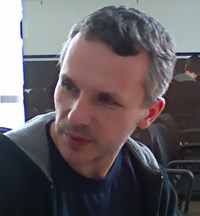
Nume: GLIGOR Mihai
Tema: Comunităţi umane şi creaţia lor materială şi spirituală în preistoria şi protoistoria spaţiului carpato-nistrean
Partener: Academia Română, Filiala Iaşi, Institutul de Arheologie, Iaşi
Proiect: Funerary Practices of the Transylvanian Human Communities in the Neolithic and Eneolithic Age
Date de contact:
mihai.gligor@uab.ro
Funerary Practices of the Transylvanian Human Communities in the Neolithic and Eneolithic Age
The funerary ritual is one of the most powerful and complex. As a part of the funerary practices, once the human was aware of death, the funerary rite and ritual elements have known various forms, starting with the paleolithic age. In Europe, studying and interpreting funerary discoveries has significantly progressed in the last decade. The potential of the funerary archaeology is also known to us, yet insufficiently emphasized through interdisciplinary research and publishing the results.
The main research direction that we intend to approach is related to realizing an exhaustive repertory of funerary discoveries from the studied timeframe and geographical space. Based on the data such obtained, we will bring complete information about the rite, existence and classification of the funerary inventory, known physical anthropology elements, presence of unusual funerary practices, correct cultural-chronological placement. In this frame, we will make a statistical analysis of the discoveries from necropolis, isolated tombs, other burial types, we will study the results and conclude accordingly.
An important theme in our research will go towards defining and explicating the terms used in the funerary archaeology for designating the specific phenomena assembly: rite, funerary ritual, inhumation, incineration, necropolis, multiple burial, ossuar, ritual centre, isolated burial/grave, interpersonal violence, grave goods, prestige goods, anthropofagy.
A distinct place in our project will be taken by thorough study of the funerary discovery in Alba Iulia-Lumea Nouă, which we consider exceptional not only for the present-day territory of Romania, but also for the entire Southern-Eastern space. Up to this point, the researches have evidenced special treatments identified on the skull cap fragments, which suggests that the Foeni communities in Lumea Nouă practiced organized rituals.
Another important aspect which we will pay attention during the research project is related to studying those archaeological artifacts included in the funerary inventory category (anthropomorphic statues, copper pieces, lithic tools, ornaments made of spondylus shell). Accrediting the idea that some artifacts from this category represent an indicator of the social hierarchy is also one of the important research directions. We seek to realize and establish correlations between the funerary inventory and the existence of the exchange relationships between human communities belonging to different cultures (for example manipulation of ornaments made of Spondylus shell).
Practice of the incineration rite in the studied period is a problem which has not yet been clarified. We wish to study deeper the practice of this rite and ritual in neolithic and eneolithic.
We fully ascertain that studying this set of problems can bring a new set of data and clarifications related to the funerary practices of the human communities from the space subject to research, and that it can contribute to a better understanding of the funerary rites and rituals from the neolithic and eneolithic age.